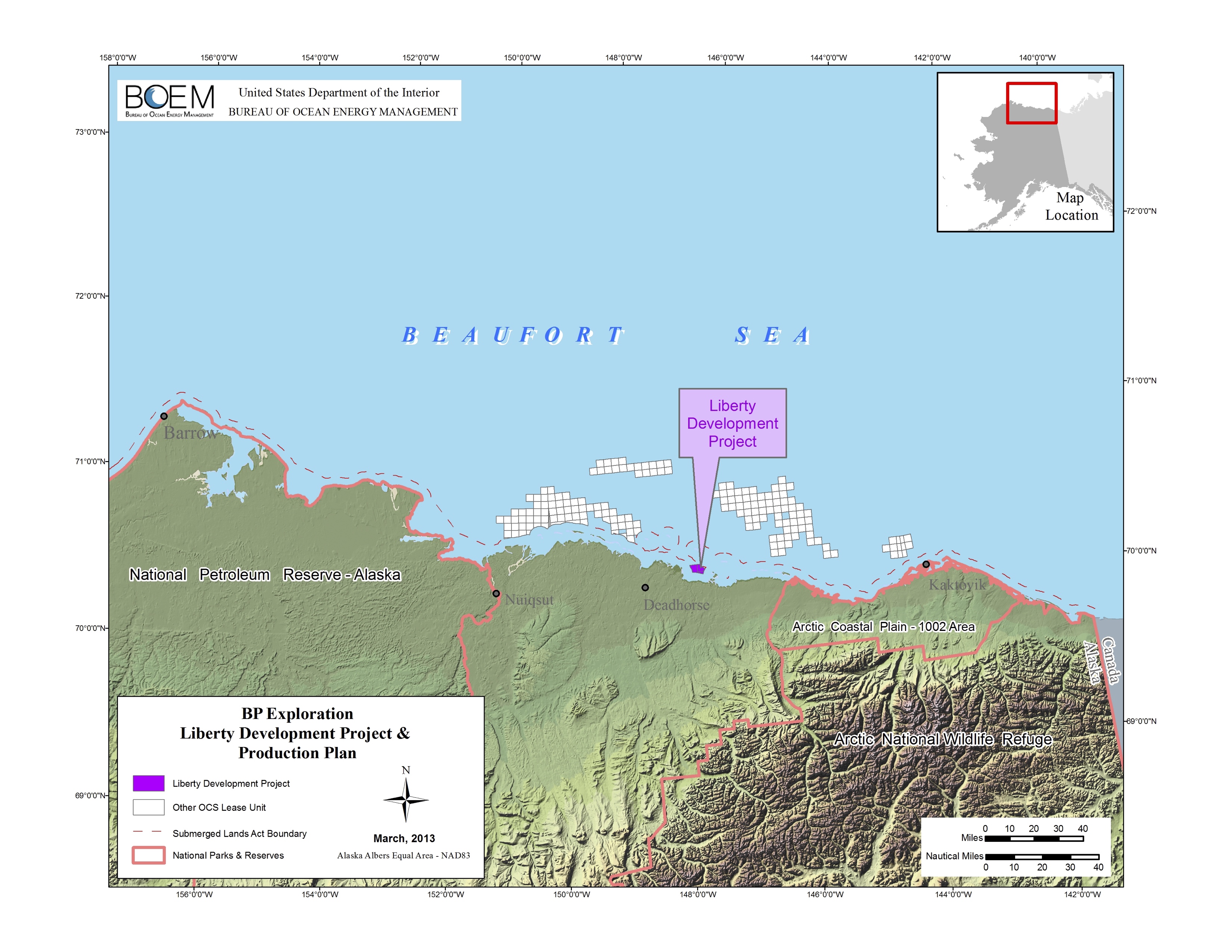Hilcorp gets a key authorization needed to develop a long-languishing offshore Arctic oil field
An "incidental take" permit will allow Hilcorp to move forward with potentially disruptive activities.

The company seeking to develop the first producing oil field located entirely in federal waters off Alaska’s Arctic coast has secured a federal permit key to accomplishing that goal.
The National Oceanic and Atmospheric Administration announced last month that is has authorized Hilcorp Alaska LLC permission to disturb marine mammals as it works to build the artificial island that is envisioned as the operations center for its offshore Liberty field in Arctic waters of Alaska.
The permit, from NOAA’s National Marine Fisheries Service, was a “letter of authorization” for incidental take of seals and whales. Incidental take, under the Marine Mammal Protection Act, is accidental harm caused to protected animals; it ranges from disturbances that change behavior to the accidental killing of animals.
The Liberty project, located 8.85 kilometers offshore in the Beaufort Sea, is believed to hold 150 million barrels of recoverable oil. Its oil was discovered more than two decades ago, but the project has languished. Hilcorp’s development plan, approved last year by the Bureau of Ocean Energy Management, is the third that has been developed for the field.
Hilcorp is seeking to build a 9.3-acre island linked to the mainland by seasonal ice roads. Construction of ice roads would start in 2021, and construction of the island would start in 2022, according to the NMFS letter of authorization. Drilling and start of production is expected to occur between 2023 and 2026, according to the NMFS document.
Under the permit issued by NMFS, Hilcorp’s island construction and related development activities are expected to create a series of disturbances to whales and seals. Among the dangers created for marine mammals are noise from activities like pile driving, industrial vibrations that animals could feel through the ice and collisions with vehicles driving on ice roads, according to the permit.
In the five years that the permit is to cover, Hilcorp is expected to cause “Level A” harassment — disturbances that cause physical injury — to two bowhead whales, two gray whales, 10 beluga whales, five ringed seals, two bearded seals and two spotted seals, according to the document. Expected to be affected by “Level B” harassment – disturbances that disrupt behavior but do not inflict physical injury – are 26 bowheads, 10 gray whales, 120 belugas, 411 ringed seals, 62 bearded seals and 62 spotted seals, according to the document.
The authorization does not cover potential damages to animals from oil spills.
The Liberty oil deposit was discovered in 1997 by BP Exploration (Alaska) Inc. In subsequent years, BP submitted two separate development plans to the Minerals Management Service, BOEM’s predecessor agency. The company wound up withdrawing those plans. In 2014, BP sold many of its Alaska assets, including half of the ownership of the Liberty project, to Hilcorp, and Hilcorp became the operator.
BP announced in August it is exiting Alaska and selling all its remaining assets to Hilcorp, including its share of the Prudhoe Bay field. If that sale goes through as planned, Hilcorp would be the sole owner of the Liberty project.
The Liberty plans have rankled environmentalists. In late 2018, they filed a legal challenge to BOEM’s approval of Hilcorp’s development plan, alleging that the agency violated the National Environmental Policy Act and the Endangered Species Act. A panel of the 9th Circuit Court of Appeals heard arguments in the case on Nov. 5.
The Center for Biological Diversity, one of the petitioners seeking to overturn the development plan’s approval, criticized NMFS for allowing Hilcorp to disturb whales and seals starting in late 2021, when the authorization is scheduled to go into effect.
“Killing endangered marine mammals is just the beginning of the terrible damage this project would do. It starts with dead whales and ice seals and likely ends with oil spills and climate chaos,” Emily Jeffers, an attorney for the Center for Biological Diversity, said in a statement. “Hilcorp has a bad safety record in Alaska and it shouldn’t be allowed to work in the harsh and unforgiving Arctic region. The Liberty project is an accident waiting to happen.”
To operate around and potentially disturb polar bears, which are protected under both the Endangered Species Act and the Marine Mammal Protection Act, Hilcorp must obtain an authorization from the U.S. Fish and Wildlife Service.